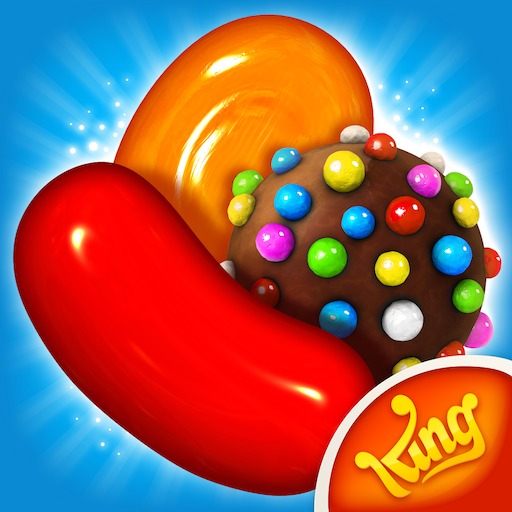
Candy Crush Saga
All trademarks belong to their respective owners. Get GameThe Accidental Social Network: Candy Crush Saga’s Cultural Transcendece
Long before the term “metaverse” became commonplace, Candy Crush Saga built a sprawling digital realm that transcended traditional gaming boundaries, becoming an unprecedented cultural phenomenon and an accidental social network. It wasn’t just a game; it was a shared global experience, weaving itself into the fabric of daily life for demographics never before considered “gamers.” Its widespread appeal, effortless shareability, and integration into social media cemented its status as a touchstone in pop culture, proving that a simple match-3 puzzle could connect millions in unexpected ways.
Breaking the Gamer Stereotype: Everyone Plays
One of Candy Crush Saga’s most significant impacts was its ability to shatter the conventional image of a “gamer.”
- Mass Appeal Across Demographics: Unlike complex console or PC games, Candy Crush Saga’s intuitive gameplay, vibrant visuals, and lack of aggressive themes appealed to an incredibly broad audience. Grandparents, busy professionals, students, and homemakers, many of whom had never played a video game before, found themselves hooked. It became the ultimate “casual game,” a perfectly digestible pastime for short breaks, commutes, or moments of downtime.
- The “Lunch Break” Phenomenon: The game’s bite-sized levels and quick sessions made it the ideal companion for moments throughout the day. It became synonymous with waiting rooms, bus rides, and coffee breaks, a convenient escape that fit seamlessly into fragmented modern schedules. This accessibility played a crucial role in its pervasive cultural penetration.
- Word-of-Mouth Epidemic: Its initial growth was largely organic, fueled by word-of-mouth. People would see their friends or colleagues playing, be intrigued by the colorful screen, and then try it themselves. The simplicity of the core mechanic made it easy to explain and even easier to get started, leading to an exponential spread across social circles.
Social Integration: The Viral Engine of Connection
King, the developer, masterfully leveraged early social media platforms, particularly Facebook, to turn individual play into a shared social experience.
- The Saga Map as a Social Ladder: The iconic Saga Map wasn’t just a progression path; it was a visual representation of your friends’ progress. Seeing a friend stuck on a level ahead of you, or proudly displaying their advancement, created a subtle sense of competition and motivation. This visual social proof encouraged continued play and interaction.
- Asking for Lives and Tickets: Early versions of the game heavily relied on friends for lives and progression tickets to unlock new “episodes” of levels. While sometimes criticized as “spammy” for Facebook feeds, this mechanism was a brilliant social engineering feat. It forced players to interact with their friends, creating reciprocal relationships and constant engagement touchpoints. It turned playing a single-player game into a shared endeavor.
- Leaderboards and Score Bragging: Simple leaderboards showing friends’ scores on each level fueled friendly rivalry. Players would strive to beat their friends’ scores, adding a competitive edge to what was primarily a solo puzzle experience. The ability to share high scores on social media provided a platform for digital bragging rights, amplifying the game’s presence.
- Virtual Gifting and Support: The ability to send lives or boosters to friends fostered a sense of community and mutual support. This simple act of gifting strengthened social bonds within the game, turning individual players into a supportive network.
Candy Crush in Pop Culture: From Meme to Mainstream
Candy Crush Saga’s cultural footprint extended far beyond active players. It became a recognized icon, permeating mainstream media and conversation.
- Ubiquitous Recognition: The game’s colorful candies, distinctive sound effects, and “Sweet!” voice lines became instantly recognizable. It spawned countless memes, parodies, and references in TV shows, movies, and advertisements. This ubiquitous presence solidified its status as a pop culture touchstone.
- Bridging Generational Gaps: For many families, Candy Crush Saga became a shared interest, a common ground for conversation between grandparents, parents, and children. It offered a rare digital activity that spanned multiple generations, fostering shared experiences in an increasingly fragmented media landscape.
- The Blueprint for Mobile Gaming Success: Its immense cultural and commercial success provided a powerful validation for the mobile gaming industry. It proved that simple, engaging games could achieve mainstream popularity and generate significant revenue, paving the way for the mobile-first gaming revolution.
Candy Crush Saga didn’t just entertain; it fundamentally altered perceptions of who a “gamer” is and how digital connections could be fostered through play. It was, in essence, an accidental social network, weaving itself into the daily lives and social fabric of a global audience, proving that sometimes, the simplest pleasures can have the most profound cultural impact.
What’s your most memorable social interaction related to Candy Crush Saga?